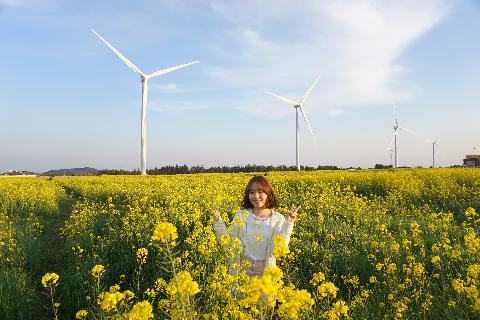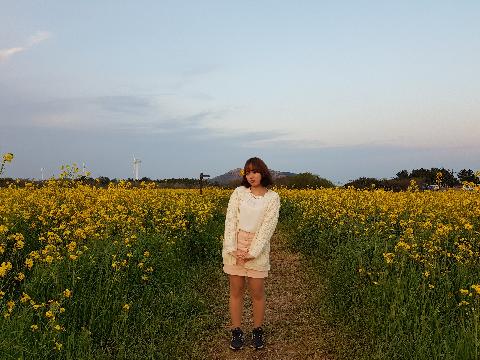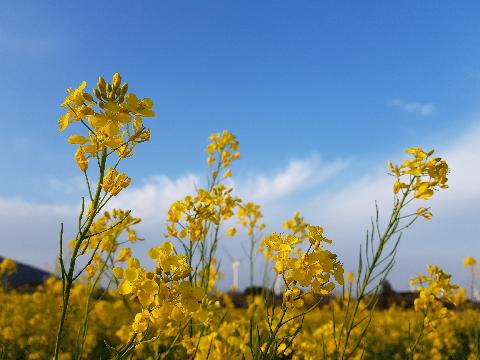본문
1
Review
69,065
Lookup
32
Share SNS

Jeju Canola Flower Festival
The yellow waves of flowers roll upon Jeju in spring
The canola flower is one of the flowers of spring that represent Jeju. In the southern region where the climate remains warm, even by Jeju’s standard, the bright yellow canola flowers start to bloom at the end of winter and last throughout spring. Canola flowers are found everywhere in Jeju, and they are known to have been planted in large volumes in Jeju since the 1960s. This is because they grow well, even in cold and humid weather, and are highly suited for Jeju’s barren soil.
However, fewer people have been growing canola flowers in Jeju since the 1980s, and the festival was introduced in 1983 to promote the beauty of canola flowers. It started as the “Grand Canola Flower Party,” which was held alternately in Jeju-si and Seogwipo-si. In 2016, the name was changed to the Jeju Canola Flower Festival, and the festival ground was established in Gasi-ri, Pyoseon-myeon in Seogwipo-si.
Gasi-ri, the treasured town in Jeju’s hilly regions
The town in Gasi-ri, where the festival is held, is known to have the greatest volumes of canola flowers in Jeju. The town is also known for its picturesque views that combine vast fields of canola flowers and the curvy ridges of volcanic cones over the far-off horizon with Noksan-ro, one of the 100 Finest Roads in Korea, Tarabi Oreum, which is called the Queen of all Volcanic Cones, and Keunsaseumi Oreum.
Spring comes to the town that adds time
The name Gasi-ri means "the town that adds time." It is one of the areas in Jeju with the largest volumes of canola flowers. The town is also known for its picturesque views that combine vast fields of canola flowers and curvy ridges of volcanic cones over the far-off horizon. Famous attractions include Noksan-ro, one of the 100 Finest Roads in Korea, Tarabi Oreum, which is called the Queen of All Volcanic Cones, and Keunsaseumi Oreum. With the Gasi-ri Creative Artist Support Center that was opened in 2011, the whole town has become "a gallery without roof."
Noksan-ro, one of the 100 Finest Roads in Korea
Noksan-ro is the road that goes through Noksanjang and Gammajang, the two greatest horse farms during the Joseon Dynasty. The 10km road is lined with canola flowers and cherry trees from start to end. It is one of the 100 Finest Roads in Korea, and every spring, the road is crowded with cars driven by tourists. It is thought to be the No. 1 scenic beauty among the 10 Scenic Beauties of Gasi-ri Town. In 2016, it was listed among the 10 Agricultural Tourism Courses to Go Trekking in April by the Ministry of Agriculture, Food and Rural Affairs. During the festival, 1.5km of the street in Noksan-ro is closed to auto traffic to provide the visitors a rare opportunity to safely enjoy the spring scenery in Noksan-ro.
Jolbeun Gapmajangil, a good course for taking a stroll
Gasi-ri is the town that housed state-operated horse farms during the Joseon Dynasty with some of the farms raising “Gapma,” the finest of all horses. In 2011, the Town of Gasi-ri created a 20km-long trekking course on Gapmajangil that connects volcanic cones, farms, and plains in the region. Visitors can enjoy historical and cultural assets along the course, which offers a unique beauty that is quite different from other tracking courses in Jeju.
Period: Around March and April every year
Inquiries: 064-760-3942







